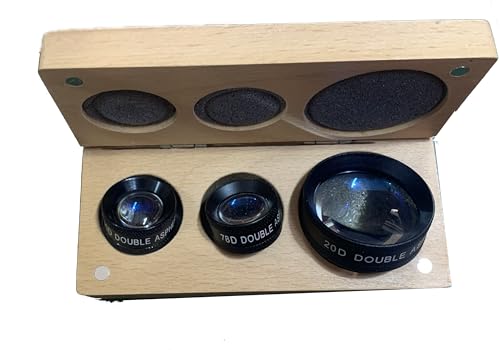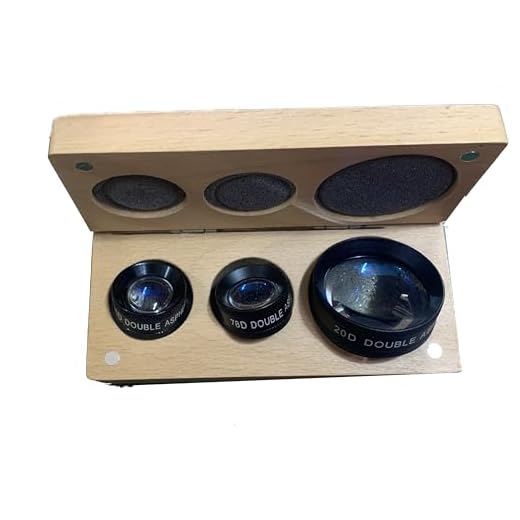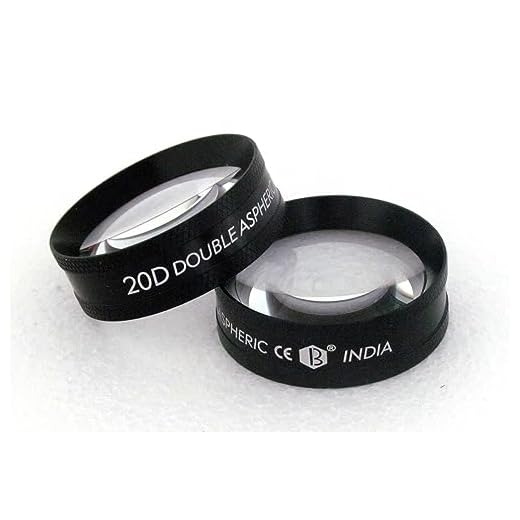



A high-quality optical device typically contains a combination of specialized elements crafted from various materials. The primary components are usually made from high-grade glass, which is essential for achieving clarity and precision in imagery. Not all glass is equal; manufacturers often use specialized types like crown and flint glass to optimize light transmission and minimize distortion.
In addition to glass, many modern systems incorporate advanced coatings that enhance performance. These coatings can include anti-reflective, scratch-resistant, and water-repellent layers, significantly improving light management and durability. The choice of these coatings can impact the overall functionality and utility of the optical system.
The frames and bodies that house these elements are commonly crafted from lightweight metals or high-strength polymers. These materials provide robustness while ensuring a manageable weight, crucial for handling in various scenarios. Understanding these materials can often lead to informed decisions when selecting the right optical gear for specific applications.
Components of a Lens System
In the construction of optical systems, specific materials are chosen to enhance performance. Commonly used substances include various types of glass, such as crown glass and flint glass. Crown glass is lighter and less dense, ideal for the creation of low-dispersion elements, while flint glass, with its higher refractive index, is used for components that require greater light bending abilities.
Coatings and Special Treatments
To improve light transmission and reduce glare, multi-layer antireflective coatings are applied to glass surfaces. These coatings consist of microscopic layers that interfere with light waves, diminishing reflections. Another treatment worth noting is the hydrophobic coating, which repels water and helps maintain clarity during adverse weather conditions.
Housing Materials
The structural integrity of an optical device is often supported by materials like aluminum or high-grade plastics. Aluminum provides strength and lightness, while plastics can offer versatility in design and weight reduction. Seals are crucial, typically made from rubber or silicone, to protect internal components from dust and moisture.
Understanding these materials helps in selecting the right optical equipment for specific needs, ensuring optimal image quality and durability.
Types of Glass Used in Camera Lenses
Choosing the right type of glass for optical elements significantly impacts performance. The most common types used include crown glass, flint glass, and low dispersion glass. Each type offers unique traits suitable for various applications.
Crown Glass
Crown glass is light and possesses low dispersion properties, making it ideal for lens elements where minimizing chromatic aberration is essential. It is often utilized in the outer surfaces of lenses and known for its high clarity and good optical performance.
Flint Glass
Flint glass, on the other hand, has a higher refractive index and greater dispersion compared to crown glass. This type is advantageous in creating complex lens systems, as it can effectively bend light to reduce spherical aberration. However, flint glass can introduce chromatic aberration, requiring careful design to balance its effects with crown glass.
Low dispersion types, such as ED (extra low dispersion) and SD (super low dispersion), offer superior performance by minimizing color fringing and enhancing contrast. These are preferred in high-end optics for their ability to maintain sharpness across the image field.
The selection process often involves a mix of these glass types to achieve the desired optical characteristics in various photography scenarios.
Understanding Optical Coatings on Lenses
Optical coatings significantly enhance performance by controlling light transmission and reflections. I recommend selecting lenses with high-quality coatings to minimize glare and improve contrast.
Common optical coatings include:
- Anti-reflective Coatings: These reduce reflections and increase light transmission, resulting in clearer images.
- Multi-coatings: Layering multiple coatings optimizes light transmission across various wavelengths, enhancing color accuracy.
- Protective Coatings: These coatings shield lenses from scratches, dust, and moisture, prolonging lifespan and maintaining image quality.
Consider the following factors when evaluating coatings:
- Light Transmission: Higher percentages are indicative of better quality.
- Durability: Examine resistance to wear and environmental elements.
- Color Accuracy: Verify if coatings improve or distort color reproduction.
Assess performance under different lighting conditions. Properly coated optics can vastly improve image quality in challenging environments, making a notable difference in your photography experience.
The Role of Elements in Lens Construction
Specific components significantly impact optical characteristics and performance. Each element contributes to focusing light and controlling aberrations, enhancing image clarity.
Types of Elements
- Convex Elements: Bend light inward, effective for focusing.
- Concave Elements: Spread light outward, useful for correcting distortions.
- Aspherical Elements: Reduce spherical aberration, improving sharpness across the frame.
- FLD (Fluorite Low Dispersion) Elements: Minimize chromatic aberration, maintaining color fidelity.
Configuration and Arrangement
The arrangement of elements dictates the lens’ optical path. A careful layout maximizes light transmission while minimizing distortions. For example, having a combination of convex and concave elements in a specific sequence helps create a more coherent image.
In multi-element systems, each part interacts with others to enhance or mitigate distortions. This interaction is vital for achieving optimal optical performance.
- Considerations for Arrangement:
- Element spacing affects focus and light scattering.
- Different glass types introduce varying refractive indexes.
- Alignments can influence the distortion correction capabilities.
Ultimately, selecting and arranging elements is crucial for controlling how light behaves within the system, directly impacting the quality of captured images.
The Importance of Lens Housing Materials
Choosing the right housing materials is critical for performance and durability. I prefer magnesium alloys when possible, as they offer a high strength-to-weight ratio, reducing overall bulk while enhancing structural integrity. These materials can withstand impact better than traditional plastics, ensuring longevity even under rigorous conditions.
Another option worth considering is carbon fiber. It provides remarkable strength and is resistant to temperature fluctuations, maintaining the precision necessary for optimal image quality. The lightweight nature of carbon fiber also aids in portability, which is desirable for travel or outdoor shoots.
Impact Resistance and Environmental Factors
When exposed to moisture, humidity, or dust, the housing’s material plays a significant role in how well the equipment endures. I often opt for units with weather-sealed bodies, as this protection can prevent damage caused by environmental factors. This is particularly crucial when working in variable climates.
Cost vs. Performance
Budget constraints can influence material choices, but investing in higher-quality housing can lead to better productivity. Cheaper plastics may seem appealing, yet they often compromise on durability and resilience. In my experience, balancing material quality with cost ensures both longevity and reliable performance.
In conclusion, the decision surrounding lens housing materials directly affects the efficiency, durability, and usability of the optical device. The benefits gained from selecting the appropriate materials far outweigh the initial investment costs.
Different Types of Lens Elements Explained
Understanding the various elements in optical systems enhances image quality and character. Each element serves a specific purpose, contributing to the lens’s overall functionality.
- Convex Elements: These are thicker at the center, bending light rays inward. They are crucial for focusing light and are often found in the primary elements of lenses aimed at creating sharp images.
- Concave Elements: Opposite to convex, these elements are curved inward, diverging light rays. They are effective in correcting aberrations and are commonly utilized in wide-angle configurations.
- Aspheric Elements: Unlike spherical elements, aspheric forms reduce distortion and improve edge-to-edge clarity. They play a significant role in high-performance optics, particularly in compact designs.
- Zoom Elements: Essential in variable focal length systems, these enable seamless adjustment of magnification. They typically consist of a combination of convex and concave shapes to maintain image quality across the zoom range.
- Group Elements: Comprising multiple individual pieces, these groups work together to enhance specific characteristics such as brightness and clarity. Their arrangement and types can significantly influence performance.
Each type of element is engineered to serve distinct optical needs, impacting the final image in terms of sharpness, distortion, and overall quality. Selecting the right combination of these components is key in achieving desired photographic outcomes.
Impact of Element Shapes on Optical Performance
Specific geometries of lens components directly influence their optical capabilities. Aspherical and convex shapes minimize distortions, while concave forms expand depth of field. Careful design mitigates chromatic aberration and enhances sharpness.
Utilizing different curvatures in element shapes allows for fine-tuning of light paths, optimizing refraction. Key characteristics include:
| Shape Type | Impact on Performance |
|---|---|
| Aspherical | Reduces spherical aberration, improving edge-to-edge clarity. |
| Convex | Enhances light gathering, crucial for low light conditions. |
| Concave | Provides increased depth of field, beneficial for wide shots. |
| Multi-element Groups | Combines various shapes to balance aberrations across the spectrum. |
Experimentation with element shapes is vital. Adjusting radius can influence focus and bokeh quality. Transitioning from simple shapes to complex combinations elevates optical fidelity, enabling creative possibilities.
Understanding these factors empowers you to customize camera setups according to distinct photographic needs, ensuring optimal results irrespective of conditions.
Why Some Lenses Use Aspheric Shapes
Incorporating aspheric designs in optical elements significantly enhances image quality by reducing spherical aberrations. Traditional spherical elements often create distortions which compromise sharpness and clarity, particularly at the edges of an image. By utilizing a non-uniform curvature, aspheric shapes allow for precise focusing of light onto the sensor plane, yielding superior sharpness across the entire frame.
Advantages of Aspheric Elements
One key benefit is the compact structure they facilitate. Aspheric elements can minimize the number of glass pieces required, resulting in a lighter and more portable design without sacrificing optical performance. This is especially advantageous for high-zoom or wide-aperture objectives, where space efficiency is critical.
Additionally, the reduction in element count helps lower costs in production and assembly. Fine-tuning the surface profile of aspheric pieces can also simplify the optical system, allowing for more straightforward alignment and calibration processes.
Application in Modern Optics
Aspheric elements are prevalent in premium models, enhancing autofocus accuracy and low-light performance. Many advanced products incorporate hybrid configurations, blending aspheric and spherical elements to optimize specific optical characteristics. This strategic combination enhances versatility while retaining high-resolution capabilities across various shooting conditions.
Overall, the adoption of aspheric shapes in optical design is a deliberate choice to push the boundaries of performance, ensuring exceptional results for varied photographic applications.
Examining the Use of Plastic in Lens Manufacturing
The incorporation of plastic materials in optical construction has become increasingly prevalent. Polycarbonate and acrylic are two notable types used for creating lightweight and durable elements, offering advantages such as shatter resistance while maintaining clarity.
Advantages of Plastic Components
Utilizing plastics reduces weight significantly compared to traditional glass elements, making equipment more portable. This is particularly beneficial for handheld systems where user comfort can influence usability. Additionally, the flexibility of plastic allows for intricate shapes that can enhance the optical design and performance.
Challenges and Limitations
Despite these benefits, certain drawbacks exist. Plastics may lack the scratch resistance of glass, necessitating protective coatings that can impact transmission quality. Furthermore, thermal stability can be a concern, as extreme temperature fluctuations might alter the optical properties of the materials used. Age-related yellowing can also affect long-term performance.
Balancing the benefits and limitations of plastic in optical assemblies requires careful consideration of the intended application, ensuring that the final product meets both performance expectations and practical use cases.
How Lens Design Affects Image Quality
The configuration of lens elements plays a pivotal role in image outcome. A well-crafted assembly minimizes optical errors such as chromatic aberration and distortion, enhancing clarity and sharpness. I prioritize lenses with multiple elements that are strategically spaced to correct aberrations and provide even light distribution.
Aspheric elements are another key factor that I consider essential. These surfaces reduce spherical aberration, allowing for improved performance, especially at wider apertures. By choosing a model incorporating these shapes, the likelihood of achieving crisp images across various focal lengths increases significantly.
Additionally, the arrangement of lens components influences depth of field and bokeh quality. Lenses designed with specific element placements can yield aesthetically pleasing background blur, crucial for portrait photography. I always assess design efficiency when selecting suitable options.
It’s also important to take into account the type of coatings applied. Anti-reflective coatings, for example, help in reducing flare and ghosting, particularly in bright conditions. I find that lenses with superior coatings tend to perform better in challenging light environments, ultimately enhancing overall image integrity.
The materials used in construction can’t be overlooked, as they affect both weight and durability, thereby influencing handling in practical situations. A quality mount and housing design can ensure longevity, which is something I prioritize when investing in equipment.
Understanding Aperture Blades and Their Materials
Aperture blades are critical components that govern light entry and depth of field in various optical devices. I find it fascinating how these elements significantly influence the overall imaging performance. Typically crafted from metals like stainless steel or brass, they offer durability and precision in movement. The choice of material directly affects the responsiveness and reliability of the diaphragm mechanism.
Common Materials Used
Many manufacturers opt for either stainless steel or brass because of their ability to resist wear over time while maintaining a precise shape. Some innovative designs incorporate plastics for lightweight applications, though these may sacrifice some of the mechanical precision found in metal counterparts. Each material can result in variations in how light passes through, impacting bokeh quality and overall image aesthetics.
Impact on Performance
The number of blades and their shape are equally crucial. Rounded blades, often seen in higher-quality optics, create a smoother background blur. Conversely, straight-edged designs can introduce unwanted shapes into out-of-focus lights. The aperture’s performance, influenced by its construction, can significantly enhance or detract from photographic results, depending on the creative vision I aim to achieve.
Exploring Reflection and Refraction in Lens Design
In lens construction, understanding the principles of reflection and refraction is essential for achieving high optical performance. Specifically, careful selection of materials and precise shaping of surfaces can enhance light manipulation, resulting in sharper images.
Reflection Dynamics
Reflection occurs when light bounces off a surface. The amount of light reflected depends on the surface material and finish. Coatings applied to the lens surfaces can significantly reduce unwanted reflections, enhancing light transmission and minimizing flare. Using anti-reflective coatings can improve clarity and contrast, making it crucial for high-quality optics.
Refraction Mechanics
Refraction, the bending of light as it passes through different media, is fundamental in determining the focal length and overall optical design. The refractive index of materials dictates how much light bends. Utilizing materials with higher refractive indices can help in creating more compact designs, enabling greater focal lengths without increasing size.
Precision in shaping lens elements is vital; regardless of the materials used, the curvature affects how light converges or diverges. Aspherical designs often prove beneficial in mitigating optical aberrations, guiding light through the lens system efficiently. When designing multi-element configurations, the interplay between refraction and reflection among different elements needs careful analysis to optimize image quality across various conditions.
In summary, mastering reflection and refraction principles allows for innovative designs that enhance the optical capabilities of lens systems, leading to superior imaging performance.
The Function of Lens Mounts in Compatibility
Choosing the right lens mount is essential for ensuring compatibility between various optical devices and their corresponding bodies. Each mount type is designed with unique specifications that determine how well components work together. Understanding these specifications allows one to navigate the myriad of available options effectively.
Key Features of Lens Mounts
Mounts vary in several vital aspects, including physical dimensions, electronic connections, and mechanical locking mechanisms. These features are crucial because they influence the ability of a lens to communicate with the camera body, impacting autofocus performance, image stabilization, and aperture control. The following attributes are central to lens-mount functionality:
| Feature | Description |
|---|---|
| Physical Dimensions | Determines compatibility with specific bodies; affects focal flange distance and overall lens size. |
| Electronic Contacts | Facilitates communication for autofocus and exposure settings; varies by manufacturer. |
| Locking Mechanism | Secures lens in place; may differ in operation across mounts, affecting ease of use. |
My experience reveals that adapting lenses via mount adapters can sometimes yield satisfactory results, but it often compromises performance quality. Each mount type has unique characteristics that contribute to the overall integrity of the image produced.
Understanding Compatibility Issues
Potential challenges arise when mixing and matching components due to varying standards across manufacturers. For example, a lens designed for one brand won’t physically attach to another due to different mount sizes or can miscommunicate electronically, leading to malfunction in features like autofocus. Incompatibilities can lead to decreased functionality or render certain features unavailable altogether.
In conclusion, selecting a compatible lens mount is fundamental for achieving optimal performance and versatility. Paying close attention to the specifications of both the lens and the body ensures a seamless connection, enhancing the photographic experience.
Analyzing the Cost of Materials in Lens Production
Cost assessment of materials involved in lens fabrication is crucial. Key components significantly influence the overall pricing structure, impacting both consumer choices and manufacturer strategies. Understanding the economic aspects helps in making informed decisions about purchasing and optimizing production.
Key Material Costs
Optical glass costs vary based on purity, quality, and specific properties like refractive index and dispersion. For instance, high-end low-dispersion glass can be considerably more expensive than standard types. Similarly, specialized coatings, which enhance durability and optical performance, contribute to increased production expenses.
Comparative Material Analysis
| Material Type | Average Cost per Unit | Impact on Price Range |
|---|---|---|
| Standard Glass | $10 – $30 | Lower-cost lenses |
| Low-dispersion Glass | $30 – $100 | Mid-range to high-end lenses |
| Specialty Coatings | $5 – $50 | All price ranges |
| Plastic Elements | $2 – $20 | Budget-friendly options |
Incorporating high-quality materials can lead to superior optical performance but comes with a notable price increase. Therefore, manufacturers must balance quality and cost to meet market demands effectively.
Environmental Considerations in Lens Material Sourcing
Sourcing materials for optical elements requires a strategic approach to minimize ecological impact. Prioritizing sustainable practices can significantly enhance the overall efficiency of production.
- Choose materials from suppliers who engage in responsible mining and extraction processes to reduce habitat destruction and pollution.
- Incorporate recycled glass and plastics into manufacturing. Such practices lower carbon footprints and reduce waste.
- Evaluate the lifecycle of materials, opting for options that are easier to recycle and have lower environmental costs over their lifespan.
- Implement energy-efficient production methods, which not only lower costs but also contribute to reduced emissions.
- Opt for local sourcing whenever feasible. This minimizes transportation emissions and supports regional economies.
Adopting these guidelines leads to a more eco-friendly production line while also fulfilling consumer demand for sustainable products.
Transparency in the supply chain enhances credibility. Sharing sourcing practices can improve brand trust and attract environmentally conscious consumers.
The Future of Lens Materials and Innovations
Advancements in polymer technology and nanomaterials hold promise for creating lighter, more durable optical elements. I advocate for the exploration of alternatives like high-index plastics which can significantly reduce weight without compromising optical performance.
Innovative Coatings and Treatments
Next-generation coatings are enhancing light transmission and reducing flare. I recommend exploring anti-reflective and hydrophobic treatments, which not only improve clarity but also maintain lens cleanliness. These treatments will likely become standard in premium designs.
Sustainability and Eco-friendly Options
Incorporating recycled materials and biodegradable compounds should be prioritized. As environmental concerns rise, using sustainable resources will increasingly appeal to consumers. I suggest collaboration with environmental scientists to identify viable substitutes for traditional materials.
FAQ:
What materials are commonly used in the construction of camera lenses?
Camera lenses are typically made from high-quality glass and various types of plastic. Optical glass is used for its clarity and ability to refract light accurately. Different types of glass, such as crown glass and flint glass, have unique optical properties that enhance image quality. In addition to glass, some lenses incorporate coatings made of compounds like anti-reflective or scratch-resistant materials to improve performance and durability.
How does the choice of lens materials affect image quality?
The choice of materials in a camera lens plays a significant role in determining image quality. High-quality optical glass minimizes distortions and aberrations, ensuring that images are sharp and detailed. On the other hand, inferior materials can introduce flaws in the images, such as blurriness or color fringing. Coatings applied to the lens surfaces also affect how light enters the lens, reducing flare and enhancing contrast, which directly impacts the resulting photograph.
Are there any innovations in the materials used for camera lenses?
Yes, there have been several innovations in lens materials in recent years. Manufacturers are exploring advanced materials like composite plastics and high-index glass to create lighter, more durable lenses without sacrificing image quality. Additionally, the development of new coatings, such as nanotechnology-based options, helps reduce reflections and improve light transmission, contributing to better performance in challenging lighting conditions.
Why is the material composition of a camera lens important for professional photography?
The material composition of a camera lens is crucial for professional photography because it influences both the technical capabilities of the lens and its longevity. Professional photographers rely on lenses that offer precision in capturing images and can perform well in various environments. High-quality glass and advanced coatings ensure that the lens can handle different lighting situations, provide color accuracy, and produce sharp images, which are all key factors in achieving professional results.










